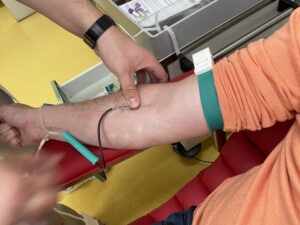Things to keep in mind if you’re adopting a dog or cat from a shelter.

So you want to open your heart to a rescued pet?
There are millions of animals in U.S. shelters waiting for a good home. Are you ready? Adopting a cat or dog is a big commitment, no matter where it comes from.
Take some time to get to know the shelter and visit or foster the pet that could become the newest member of your household. You may not find the perfect match the first or second time you visit a shelter, so be patient. Making a good choice can help you and your pet have a lifelong, rewarding relationship.
What to Consider Before Adopting a Pet
Look at your lifestyle and means before committing to adopting a pet.
If you don’t travel a lot or plan to move, and you have enough money to cover the cost of the pet’s care, that’s a big plus.
Think about your living space and whether you have room for a big dog. Ask yourself whether you want an energetic pet or a couch potato. If you can’t provide the exercise an animal needs, consider the latter.
Also, think about how much time you have to give your dog.
Not all shelter animals will be properly trained, so be prepared to retrain your dog. It will help build your relationship. As for cats, adopt with some understanding of their scratching and litter box habits.
Finally, if you have a family or a partner, is everybody willing to pitch in to care for the pet? It’s a good idea to create a schedule of responsibilities.
What Kind of Shelter Should You Adopt From?
Look for a shelter that does behavior assessments on dogs and/or cats, and has veterinarians who are providing medical exams and treatment, says Gail Buchwald, vice president of the adoption center at the ASPCA in New York City.
“I think it’s a great idea for a prospective adopter to go to the shelter and check it out, get a visual. If they see animals that don’t look healthy, they should ask some questions,” she says.
If the animals seem well cared for, talk to the staff about your needs and get their thoughts about the dog or cat you’re eyeing. If a shelter doesn’t do any testing of its animals for diseases that aren’t obvious, an adoption may be riskier, Buchwald says.
“The biggest drawback is not knowing what you’re going to get, but it’s the same drawback with breeders and pet stores,” she says. “Choosing a shelter that provides as much information as possible about the animal is important.”
Keep in mind that you may not find exactly what you’re looking for the first time around.
”This is up there with getting a car or a house; expecting to walk out the same day with a shelter animal may not happen. It may require several visits,” Buchwald says. “Making the commitment to adopt means you’re going to help a homeless animal, even if it doesn’t happen instantly.”
Why Is the Shelter’s Adoption Fee So High?
Though the average shelter adoption fee is $75, Saunders says, the price of taking home a new pet can be as high as $250 to $300.
That can come as a shock, but consider the cost to a shelter for spaying and neutering, giving vaccines, testing for disease, deworming, and general upkeep, which can easily come to $2,000, says Buchwald.
“Typically, the donation doesn’t cover the cost, much less keep the lights on in the shelter,” Saunders says. “Someone won’t think twice about walking into a pet store and spending $600 on a puppy that’s been poorly bred and likely to get sick. They’ll also have to pay for spay/neuter and additional medical costs.”
Preparing for Your Adopted Pet
Dogs and cats have different basic needs, but for both, it’s a good idea to get ID tags or microchip your new pet at the beginning of your relationship so you don’t get separated from each other. Also, make sure you’ve got food and water bowls at the ready.
For cats, the ASPCA advises you to have:
- A litter box with clean litter, preferably the kind used in the shelter where she came from
- A bed lined with a blanket or towel
- A brush and a nail clipper, if the cat has her claws
- Stimulating, safe toys
- A scratching post that is at least 3 feet high
For dogs, have:
- A crate for training and for creating boundaries in your home
- Barrier gates to restrict the dog’s movement until you are comfortable allowing him unsupervised access
- A leash
- A chew toy or bone
Cat-proof and dog-proof your home by tucking away electrical cords and putting away small children’s toys that they can swallow.
For new pet owners, line up a veterinarian you trust and bring in your new family member for a wellness exam as soon as you can.
What if It Doesn’t Work Out?
If there are reasons why an adopter can no longer take care of the pet — such as financial problems or allergies — returning it to a shelter is the way to go, Saunders says.
“Part of the adoption process is understanding that the adopter will bring back the pet if it doesn’t work out,” Saunders says. “We want it to be a lifetime match, but if it isn’t working, having them bring the animal back to the shelter, we consider it a success. The shelter is a support for adopters and pets.”





















